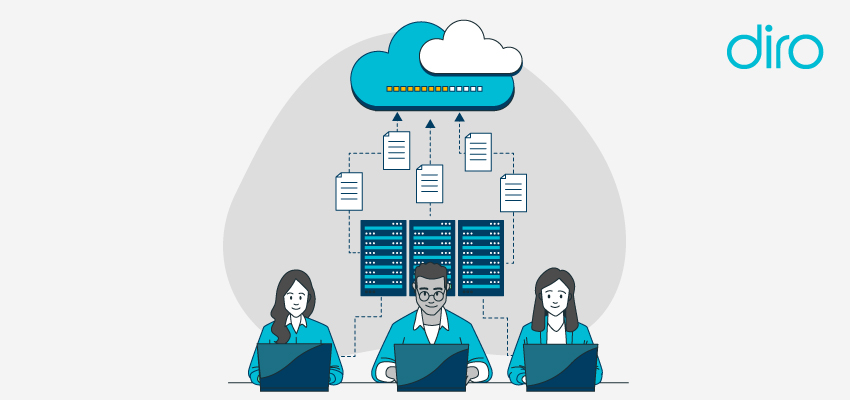Data sharing is set to revolutionize collaboration in the financial sector. By breaking down barriers and fostering a connected ecosystem, it enhances risk management and uncovers new business opportunities. The power of shared data is transforming the financial industry.
In this guide, we’ll talk about the importance of data sharing & collaboration for financial institutions.
Why is Data Sharing Crucial?
1. Collaborative Intelligence for Better Risk Management
Sharing data enhances risk management in financial institutions. Collective insights from shared data provide a comprehensive understanding of trends, vulnerabilities, and proactive risk strategies.
This shift from isolated approaches allows institutions to identify and mitigate systemic risks early. Diverse data sources empower institutions to navigate uncertainties effectively, positioning them as leaders in risk mitigation.
2. Breaking Down Silos: Fostering Collaboration
Robust data-sharing initiatives naturally dismantle organizational silos. Traditionally isolated departments can now share information, enhancing the organization’s collective intelligence.
This fosters a collaborative environment where insights from different sectors converge seamlessly. Transparent data sharing across departments provides a 360-degree view, enabling informed decision-making, streamlined processes, and swift adaptation to market changes.
This collaborative culture spurs innovation and unites teams towards common goals.
3. Unlocking Business Opportunities with Shared Data
Beyond risk management, shared data unlocks new business opportunities. Collective intelligence from shared data reveals market trends, underserved segments, and potential for innovation.
It drives the financial industry towards growth and innovation. Institutions can tailor their products and services to evolving client needs, staying ahead of the curve and identifying niche markets. Shared data provides the agility to create innovative solutions that resonate with the dynamic financial landscape.
4. Overcoming Challenges in Data Sharing
Effective data-sharing initiatives face challenges like data privacy, regulatory compliance, and the need for standardized protocols. Balancing collaboration with safeguarding sensitive information is crucial for building trust and ensuring ethical use of shared data.
5. Addressing Data Privacy Concerns
Navigating complex regulations to handle customer information responsibly is vital. Robust cybersecurity measures and compliance with data protection laws mitigate risks associated with data sharing.
6. Navigating Regulatory Compliance
Financial institutions must operate within a framework of rules designed to maintain the integrity of the financial system. Proactively balancing regulatory compliance with collaborative data sharing demands transparency and commitment.
7. Standardizing Protocols
Creating interoperable systems for seamless data exchange while maintaining security standards requires industry-wide collaboration. Establishing common frameworks and protocols ensures efficient and effective data sharing, overcoming technological barriers.
Conclusion: Collaboration Leads to Safety
Data sharing fosters collaboration, marking a paradigm shift in the financial industry. Beyond competition, collaborative data utilization creates an interconnected, resilient, and innovative ecosystem. By enhancing risk management and uncovering new business opportunities, shared data propels the financial industry into an era of collaborative excellence, where collective intelligence surpasses individual capabilities.
Frequently Asked Questions (FAQs)
What is the main benefit of data sharing in financial institutions?
The main benefit is enhanced risk management. By sharing data, institutions can gain collective insights into trends and vulnerabilities, allowing for proactive risk mitigation and better decision-making.
How does data sharing break down organizational silos?
Data sharing promotes transparency and cross-functional collaboration, allowing different departments to access and share information. This creates a more integrated and efficient workflow, fostering innovation and better overall performance.
What are the business opportunities unlocked by shared data?
Shared data reveals market trends, identifies underserved segments, and highlights potential areas for innovation. This enables financial institutions to tailor products and services to meet evolving customer needs and stay ahead of the competition.
What are the challenges associated with data sharing?
Key challenges include ensuring data privacy, complying with regulatory requirements, and establishing standardized protocols for data exchange. Balancing these aspects is crucial for the success of data-sharing initiatives.
How can financial institutions address data privacy concerns?
Institutions can address data privacy concerns by implementing robust cybersecurity measures, adhering to data protection laws, and ensuring responsible handling of customer information.
What role does regulatory compliance play in data sharing?
Regulatory compliance ensures that data-sharing practices uphold the integrity of the financial system. Financial institutions must navigate regulations carefully to engage in data sharing while maintaining transparency and trust.
Why are standardized protocols important in data sharing?
Standardized protocols facilitate seamless and secure data exchange between institutions. They help overcome technological barriers and ensure that data-sharing initiatives are efficient and effective.









